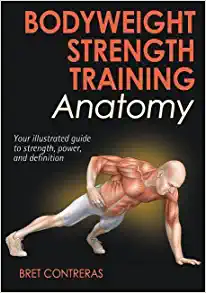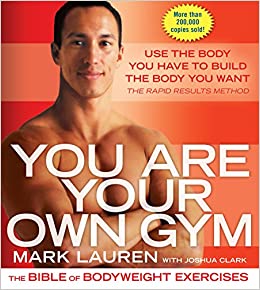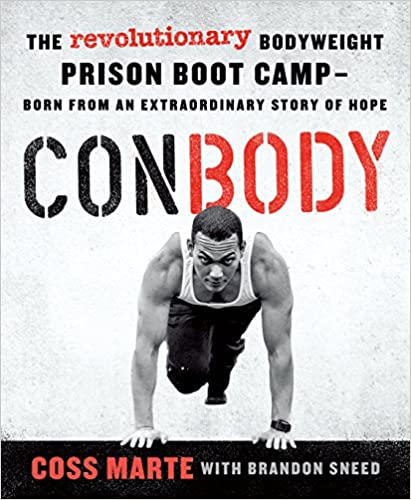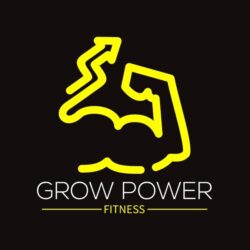Are you trying to find a quick and efficient technique to get more fit? Use only your bodyweight for exercises. These adaptable exercises can be performed at any time and anywhere without the use of costly equipment or a gym membership. This article will examine the advantages of bodyweight exercises, go through several types of exercises, offer advice on how to include them into your routine, and present a sample training schedule. Let’s start now!

Bodyweight Strength Training Anatomy
Bodyweight Exercises’ Health Benefits
Fitness lovers of all levels can benefit from bodyweight workouts in a variety of ways. Here are a few significant benefits:
Enhances muscle tone and strength
The capacity of bodyweight exercises to increase strength and tone muscles is one of their main advantages. Exercises like push-ups, squats, and lunges train many muscle groups at once by using your own body weight as resistance, which results in functional strength development.
Improves Mobility and Flexibility
Flexibility and mobility-enhancing motions are frequently used in bodyweight exercises. Exercises that assist you extend your range of motion, increase joint flexibility, and improve overall mobility include yoga poses, deep squats, and dynamic stretches.
Improves Cardiac Health
Bodyweight exercises can nevertheless improve your cardiovascular health even though they might not be as severe as more conventional cardiovascular sports like running or cycling. You can raise your heart rate and enhance your cardiovascular fitness by doing exercises in a circuit or with high-intensity intervals.
Promotes Body Composition and Weight Loss
Bodyweight exercises can be a useful technique for controlling weight and body composition. These activities boost fat loss by increasing metabolism and helping to build lean muscle mass. Bodyweight workouts can also help you contour your body, giving it a toned, defined appearance.
Needs Minimal to No Equipment
The fact that bodyweight exercises require little to no equipment is one of its most alluring features. Bodyweight exercises, in contrast to conventional gym routines, use your own body weight as resistance instead of equipment or weights. This implies that you can carry out these workouts anywhere, including at home, in a park, and even while on the road.
Bodyweight exercises save money because they don’t require any special equipment. You don’t have to buy pricey exercise gear or pay for a club membership. To begin, all you need is your own body and some free space.

You Are Your Own Gym: The Bible of Bodyweight Exercises
Bodyweight Exercises: Types
Bodyweight exercises cover a wide range of motions that work various muscle groups and body parts. Listed here are a few popular bodyweight exercises:
Upper-body workouts
Your arms, shoulders, chest, and back muscles can all benefit from strengthening and toning workouts for the upper body. Push-ups, pull-ups, dips, and many variations of the plank are a few common upper body workouts. These movements strengthen the upper body and enhance posture.
Lower Body Workouts
Exercises for the lower body mostly work the muscles in your legs, such as the quadriceps, hamstrings, glutes, and calves. Lower body bodyweight exercises including squats, lunges, step-ups, and calf raises are ideal examples. They aid in enhancing the power, stability, and general strength of the lower body.
Core workouts
The muscles in your lower back, hips, and abdomen are the focus of core exercises. These exercises not only improve stability and balance but also aid in developing a strong, toned core. The plank, the Russian twist, the mountain climber, and the leg raise are some fundamental bodyweight exercises.
Whole-Body Workouts
Exercises that train the entire body simultaneously utilize several muscle groups, giving you a thorough workout. Jumping jacks, burpees, and mountain climbers are all terrific full-body bodyweight exercises. They increase your heart rate, help you lose weight, and make you stronger and more resilient overall.

ConBody: The Revolutionary Bodyweight Prison Boot Camp, Born from an Extraordinary Story of Hope
How to Add Bodyweight Workouts to Your Routine
Bodyweight exercises are easy and adaptable to include in your workout regimen. Here are some pointers to get you going:
Warm Up Before You Start
Warming up your muscles and getting your body ready for the workout is essential before starting your bodyweight workouts. Perform dynamic stretches for 5 to 10 minutes, including arm circles, leg swings, and torso rotations. Your joints will become more flexible, your blood flow will improve, and your chance of injury will decrease.
Begin with simple exercises and advance gradually
Start with simple exercises that focus on the main muscle groups if you’re new to bodyweight workouts. Learn the correct form and technique before moving on to more difficult variations. For instance, do one-arm push-ups after practicing normal push-ups.
Establish a Balanced Schedule
Include a range of bodyweight workouts in your regimen to attain balanced fitness and prevent muscular imbalances. Include workouts that focus on your core, lower body, and upper body. Aim to perform a variety of stretching, cardio-focused motions, and strength exercises.
Adjust Exercises for Your Level of Fitness
You can adjust bodyweight exercises to fit your level of fitness. Try regressing or changing the movement if a workout feels too difficult. Consider substituting knee pushups for full pushups or choosing aided pull-ups with a tension band. Gradually up the complexity of the exercises as you advance.
Bodyweight Exercise Routine Example
You can try the following bodyweight workout routine, which is an example:
Warm-up activities:
2 sets of 10 reps in each direction for the arm circles.
Leg swings: two sets of ten swings with each leg.
Torso rotations: two sets of 10 reps on each side, alternate
Upper-body workouts:
3 sets of 12 repetitions for pushups
Dips (with a bench or chair): three sets of ten repetitions.
Plank: Hold for thirty seconds, then repeat three times.
Lower-body workouts:
Do 3 sets of 12 reps for squats
3 sets of 10 repetitions of lunges, one leg at a time.
3 sets of 15 repetitions for calf lifts
Core workouts:
Plank: Hold for thirty seconds, then repeat three times.
3 sets of 15 repetitions for the Russian twists
Leg raises: three sets of 12 reps.
Always give yourself a 30- to 60-second break between sets and workouts. Depending on your level of fitness and comfort, change the amount of repetitions and sets. As you advance, gradually raise the level of difficulty and intensity of the workouts.

Complete Calisthenics, Second Edition: The Ultimate Guide to Bodyweight Exercise
Tips for Getting the Most Out of Bodyweight Exercises
Take into account the following advice to get the most out of your bodyweight workout routine:
Emphasize correct form and technique
To avoid injuries and maximize the benefits of the workouts, good form and technique must be maintained. Keep your body in proper posture, use the right muscles, and steer clear of jerky or careless motions. The key is quality above quantity.
Put yourself to the test with modifications and advancements
As you get more accustomed to the fundamental bodyweight exercises, push yourself by attempting new variants and progressions. For instance, instead of doing standard squats, you may perform pistol squats or add a twist to your plank. These variants assist in targeting various muscles and maintain the interest of your workouts.
Incorporate days of rest and recovery into your schedule
For muscular development and general fitness improvement, rest and recovery are essential. Allow adequate time for your body to heal in between workouts. Think about including active recuperation days where you concentrate on stretching, mobility drills, or low-intensity workouts like yoga or walking.
Integrate bodyweight exercises with other training methods
Even while using only your bodyweight can be a thorough workout, mixing in other types of exercise can bring variety and improve your fitness level as a whole. For an additional challenge, add aerobic exercises like running or cycling or resistance training using weights or resistance bands.
Typical Errors to Avoid
Avoid the following frequent errors to make sure you get the most out of your bodyweight workout routine:
Skipping warm-up and cool-down periods
Skipping the warm-up and cool-down can make you more likely to get hurt and make your muscles sore. Always spend the necessary time warming up before exercise and cooling down afterward to aid in the recovery of your muscles.
Lack of rest and excessive exercise
Injuries, weariness, and a decline in performance can all result from overtraining. To give your body time to recuperate and adjust to the workouts, make sure to include rest days in your schedule. Don’t push yourself past your boundaries; instead, pay attention to your body.
Ignoring proper technique and form
When bodyweight exercises are performed improperly, their efficiency is decreased and there is a higher chance of injury. Spend some time learning and perfecting the correct form for each exercise to make sure you’re targeting the right muscles and putting as little stress on your joints as possible.
Not Advancing or Pushing Yourself
It’s critical to advance and push oneself if you want to see constant improvements. By include additional repetitions, attempting challenging variations, or extending the range of motion, gradually raise the complexity of your workouts.
Get out of your comfort zone and strive to continuously put your body under stress. You may encourage muscle growth and raise your overall fitness level by gradually increasing the difficulty of your exercises.

Bigger Leaner Stronger: The Simple Science of Building the Ultimate Male Body
Conclusion
Strength, flexibility, cardiovascular health, and general fitness can all be enhanced with bodyweight workouts, which are adaptable and simple to do. You can carry out these workouts anytime, anywhere, and without any special equipment. You may design a balanced workout that targets several muscle groups by mixing up your upper body, lower body, and core movements. Always pay attention to appropriate form, push yourself with variations and progressions, and schedule rest days into your regimen. Bodyweight exercises can help you reach your fitness objectives and result in a healthier and stronger physique with commitment and consistency.
FAQs
Can workouts done with the body help you lose weight?
Absolutely! By burning calories and gaining lean muscle mass, bodyweight exercises can help you lose weight and speed up your metabolism.
Do beginners benefit from bodyweight exercises?
Bodyweight exercises can be changed to meet varied fitness levels, so they are appropriate for beginners. As you gain strength and confidence, start with the basics and gradually advance.
How frequently should I engage in bodyweight exercises?
Depending on your objectives and degree of fitness, you should perform bodyweight exercises frequently. Aim for at least two to three workouts per week, with time between for rest and recovery.
Can activities using your own body replace weightlifting?
Despite the fact that bodyweight workouts can lead to significant strength improvements, weightlifting may still be necessary occasionally. The best outcomes for muscular growth and general fitness can be obtained by combining bodyweight workouts and weightlifting.
Can workouts done with the body increase muscular mass?
Yes, bodyweight workouts can help novices or those just starting their fitness adventure to gain muscle mass. Nevertheless, as you advance, adding more resistance—like weights or resistance bands—may be required to keep pushing your muscles to expand.

